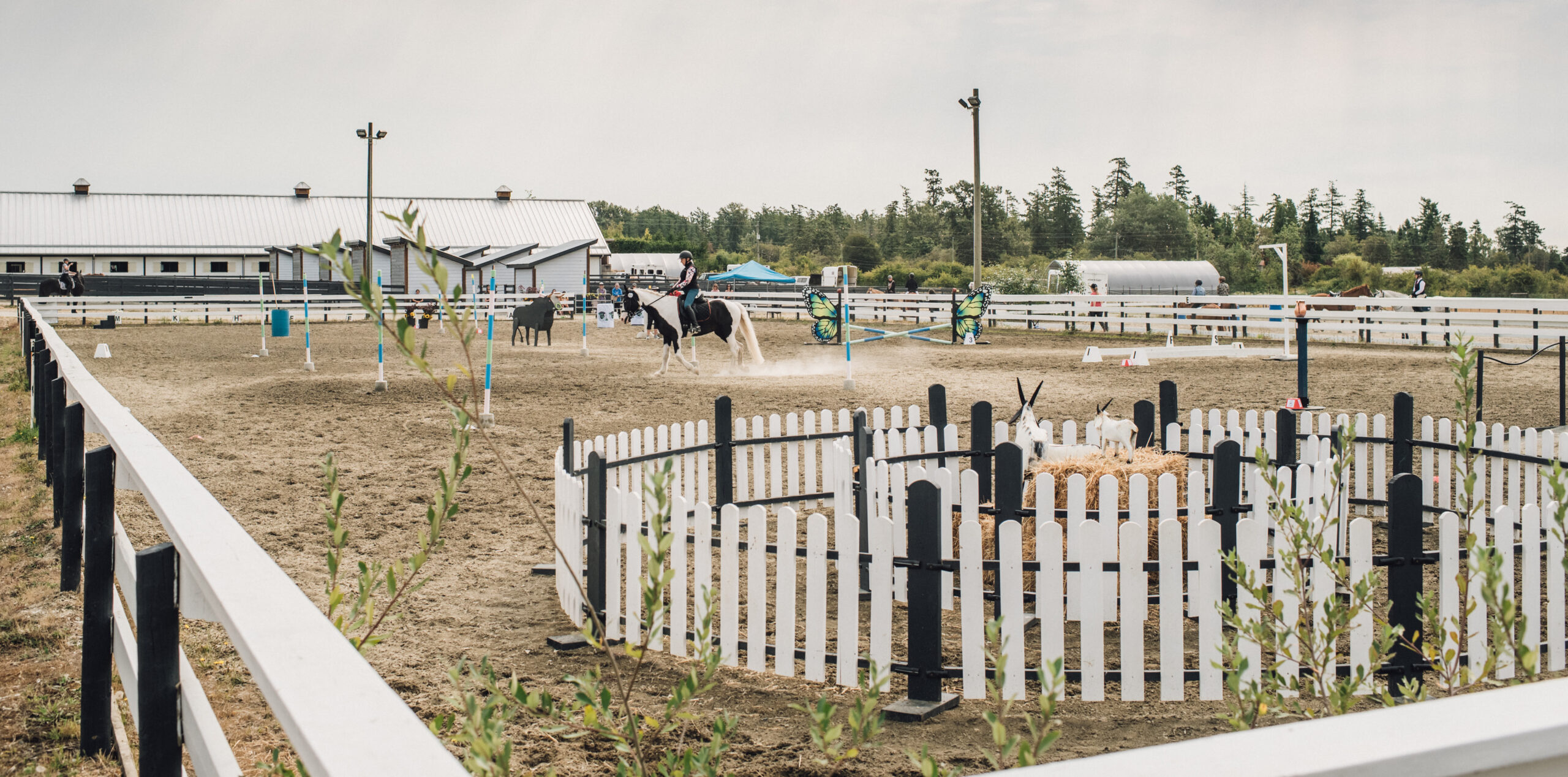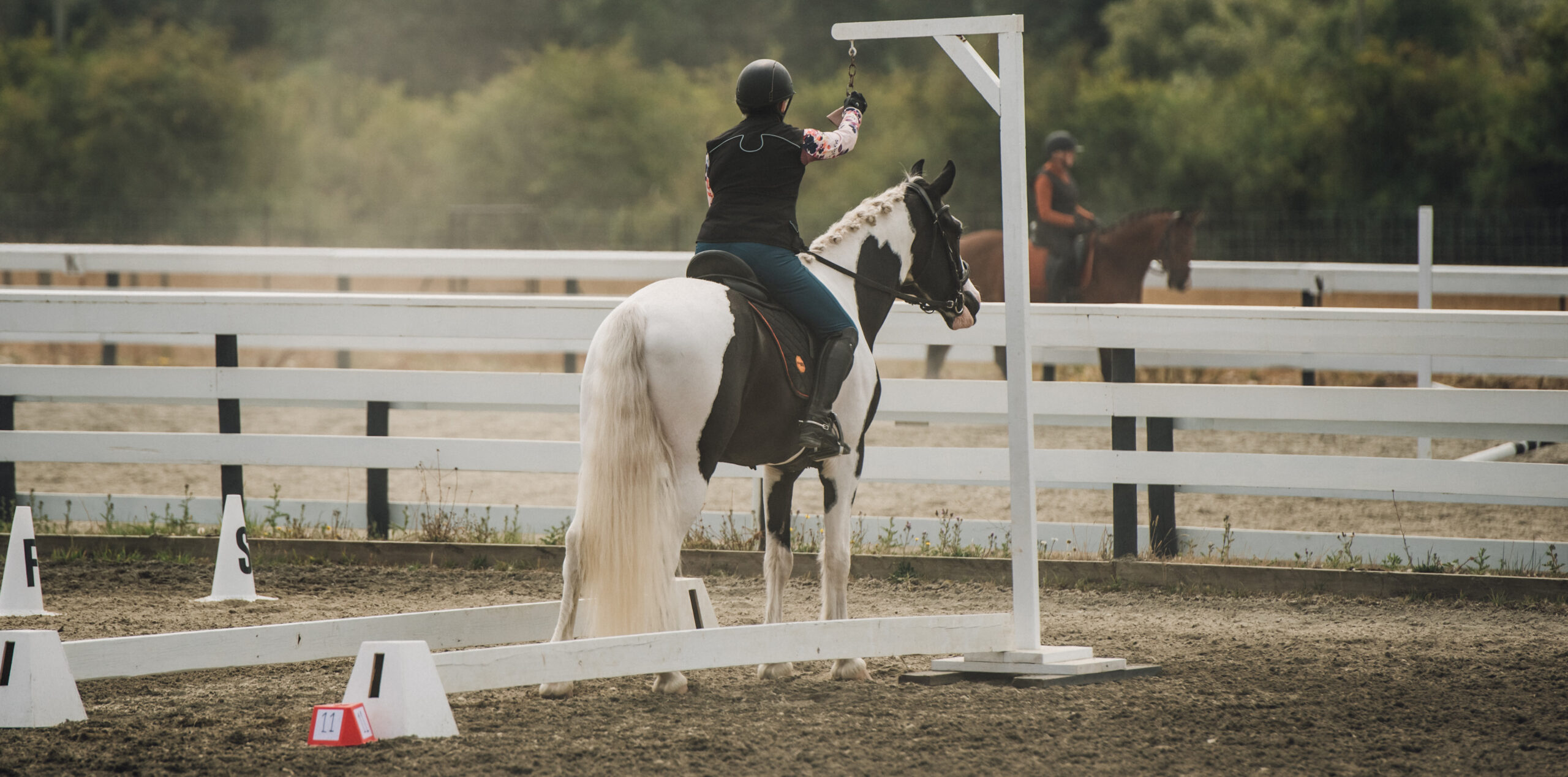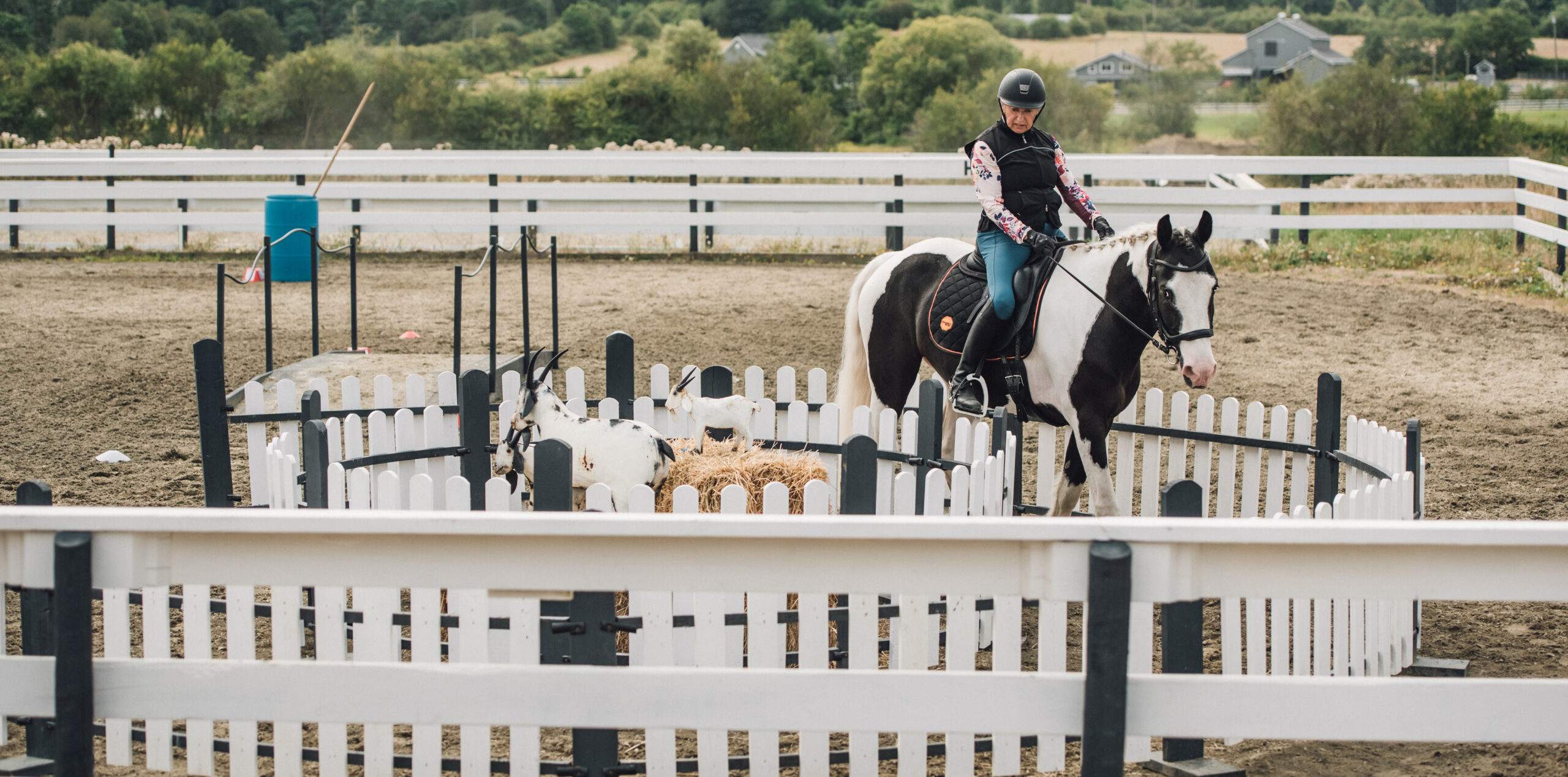by Cassidy Nunn | photos by Nunn Other Photography –
The riding arena is filled with a variety of obstacles – a long wooden bridge; a rope strung between two jump standards, meant to simulate a gate; a wooden pen with one entryway; a bell on a stand, ready to be rung; slalom poles stand at attention, ready to be weaved through. A small cross rail jump is set up and in the middle of the arena a large wooden bull is poised, a spear ring atop his back. A long pole sits in a barrel several metres away; the rider is meant to grab the pole, skewer the ring on the end of it and then deposit the pole and ring in a second barrel at the other end of the arena. These are just a few of the fun and challenging obstacles that make up a part of the sport of Working Equitation.
If you haven’t heard of Working Equitation – whether you’re a horse person or not – you’re likely not alone. It’s a relatively new sport in the horse world, one that was developed in the 1990s in Portugal, France, Spain and Italy, as a way to showcase the abilities and skills needed for the horse and rider working on livestock farms in these regions. It’s a sport that is quickly gaining a wide following across the horse world, including here on Vancouver Island.
Working Equitation has four trials. The Dressage Trial consists of set tests that are ridden at each level, with movements being given a score by a judge. In Ease of Handing, the obstacles are used. They are placed to simulate some of the challenges and obstacles that a horse and rider team working in the field might encounter, such as opening and closing a gate, for example. This phase is also scored by a judge. During the Speed Trial the obstacle course is timed, with the key objective being to navigate the course error free, in the right order, in the shortest possible time. At the upper levels, the Cattle Trial is a timed event ridden with three or four other horse and rider combinations and tests the ability to work with sorting cows from a herd.
Something special about the sport is the inclusivity it offers; horses of all breeds and sizes can participate and excel. There are few restrictions to the type of tack and attire the horse and rider can use and it’s open to ages seven and up. It’s a discipline that requires and showcases excellent training of the horse and a solid partnership. These skills and principles are what attracted longtime coach and rider Stella French to the sport, as well as the great sense of community and people who are involved, “I haven’t found ‘cliquiness’ yet!” she says with a laugh. Stella is the president of the Vancouver Island Working Equitation chapter, which is affiliated with the larger organization of Working Equitation Canada. She took on the role several years ago and has worked hard alongside other riders and coaches those passionate about the sport to bring more awareness to the discipline here on the island. She competes up to the Intermediate A level on her own horse as well as teaches introductory clinics to those wanting to give Working Equitation a try. This year, now that there are enough riders on the Island familiar with the sport and sticking with it, she’s looking forward to teaching at the higher levels. “We’re starting to see people committed to the discipline,” she says. The rise in membership has also meant that “this is the first year that we’ve started to pursue some outside clinicians.” There will be four sanctioned shows held across Vancouver Island in 2024 and several clinics and schooling days as well.
For more information on Working Equitation, visit www.viworkingequitation.ca.






